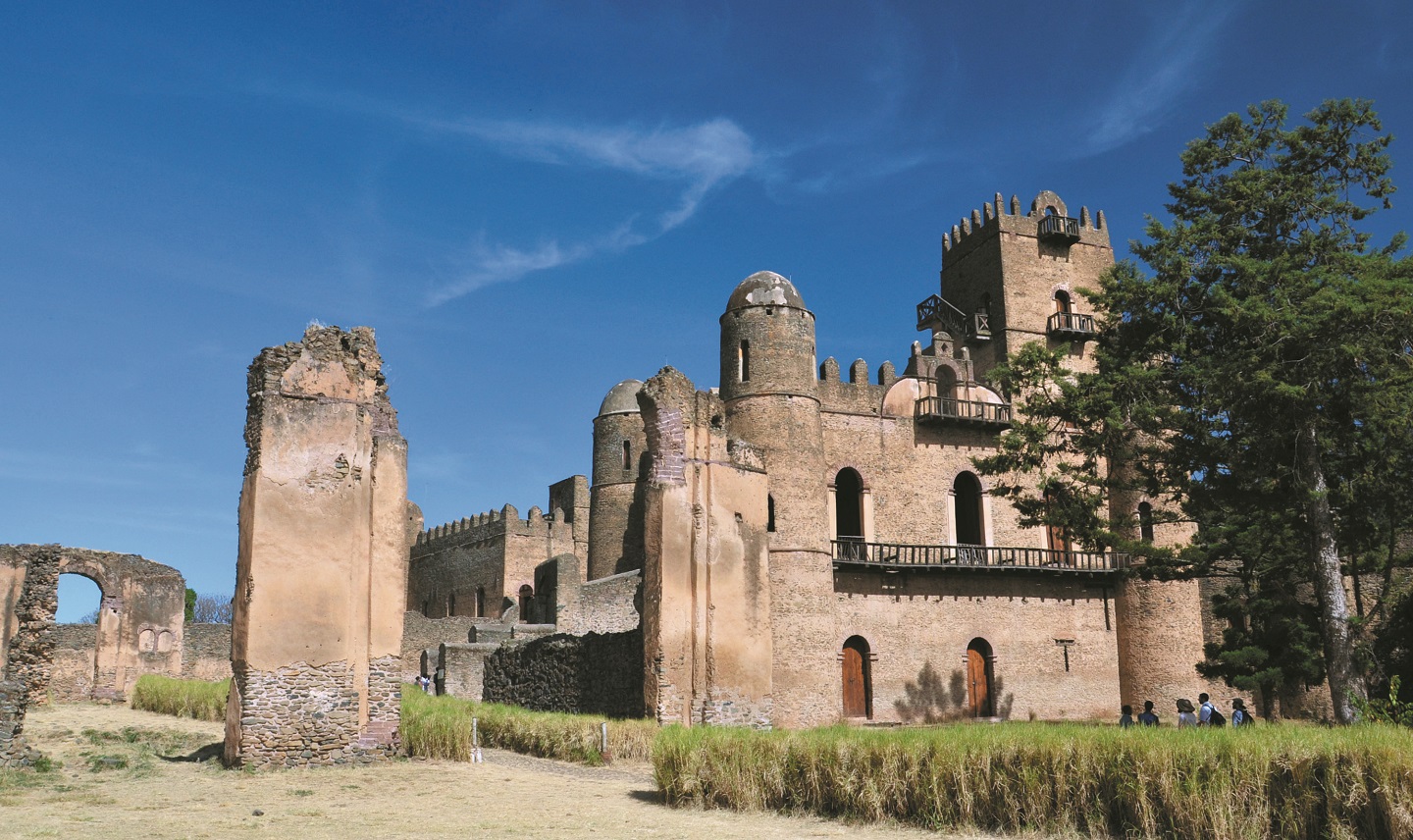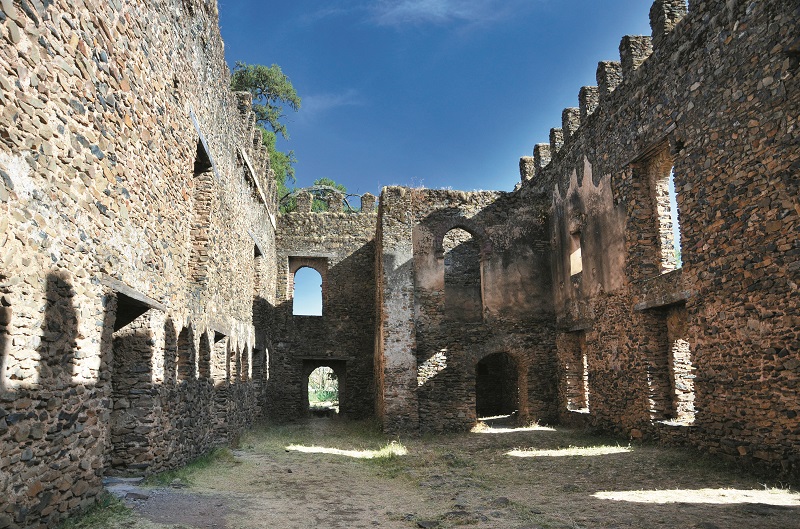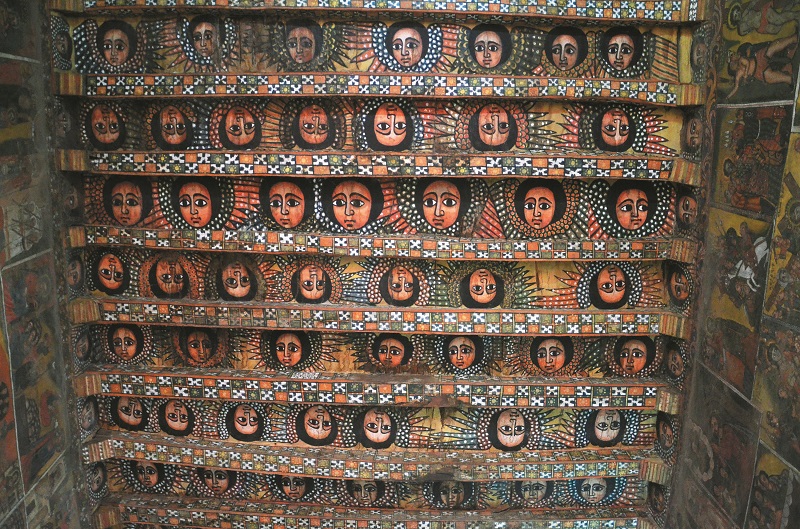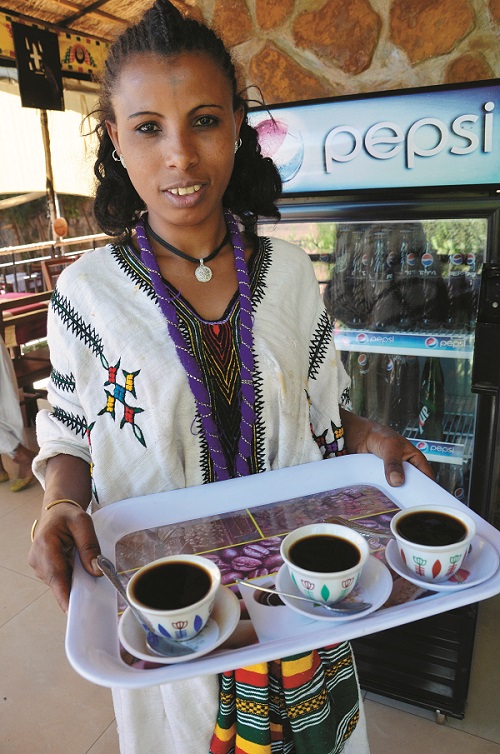
Although much of it is in ruins, the castles of Fasil Ghebbi in the middle of Gondar are still striking. (Photos: Lee Yu Kit)
Dappled sunlight fell on the road — fringed by eucalyptus trees on either side — as we entered the ancient city of Gondar. The trees were imported from Australia and have pretty much taken over the country.
Gondar was once one of the most important cities in the country. There was no capital, with the royal family wandering from one spot to another in encampments, but that changed in 1636 when King Fasilides declared Gondar as the capital. Its location in the highlands near the Simien Mountains rendered it malaria-free and its clement weather endeared it to generations of Ethiopian royalty.
Shortly before we reached the city, we found an unlikely stop — a beer brewery, no less. We turned off the road and, after some security formalities, were admitted into the parking lot of the Dashen Brewery. The compound was large, well-kept and lush with many trees and bushes, and the facilities were modern. The attraction was the Beer Garden, an open-sided building with bar stools and a wooden table top. An attendant drew cold draught beer fresh from the factory into big glass mugs. My companions and I toasted each other and Ethiopia. Of a clear golden colour, the drink was fresh, frothy and light and instantly refreshing. It was a cheerful welcome to the ancient city.
Modern-day Gondar is not much to look at — its buildings are devoid of character or charm. A piazza is a reminder that Italy occupied Ethiopia in the early 20th century. Gondar’s fortunes declined in the late 19th century but it is still one of the most visited sites in Ethiopia for a singular reason — its castles.
With a guide, we visited the walled compound of Fasil Ghebbi to check out empty castles. There are several large and stately buildings — not only are there the palaces of Kings Fasilides and Iyasu and Emperors David and Bekaffa, there is also a library, a zoo which once housed lions and a chancellery. As with all royal successions, there was intrigue, passion and skullduggery aplenty in the royal family’s history, but the compound stands mute and empty now, occupied only by ghosts.

The thick walls, grand staircases, crenellated battlements and large empty halls are still intact, although the roofs have collapsed and the walls have tumbled. Proportions are grand, with ambitious architecture. Any traces of plaster or cladding on the walls have long since disappeared, exposing bare stone. It is the skeleton of a once vast imperial complex, severely damaged in an earthquake in 1704 and bombardment by the British during World War II (the Italians staged their last stand in Gondar).
The guide pointed out the different architectural styles — from the Indian-Moorish-ethnic Ethiopian style of the early castles to the later buildings, influenced by the Baroque style brought by Portuguese missionaries. There was the symbol of the Star of David as Gondar was a centre for the Ethiopian Jews or Falashas, who claim descent from Menelik I, the son of Queen Sheba and founder of the Solomonic dynasty of emperors who ruled Ethiopia.
Most of the Ethiopian Jews were airlifted to Israel in the 1990s by the Israeli government, but there remain traces of the Ethiopian Jews. A short distance outside Gondar, there is what remains of an Ethiopian Jew village, complete with a synagogue and plenty of stalls selling tourist ware.
A part of the Fasil Ghebbi complex is the Fasilides Bath a short drive away. We entered a walled compound shaded by trees. A platform runs along the walls, with steps leading down to a large rectangular bathing pool. In the centre is a 3-storey building that is connected by a walkway to the outer wall. Tree roots grip and spill over two of the walls. Once a royal bath and used for religious occasions, the bath continues to play an important role every year — during Timket, or the Ethiopian Epiphany, thousands of Ethiopians converge and immerse themselves in the pool.

Religion continues to play a central role in Ethiopian society. In its heyday, Gondar was a centre of culture, learning and religion. There were once 44 churches in the city, all of which, except one, were destroyed by Sudanese dervishes in the late 19th century.
So we visited the last remaining church, the Debre Birhan Selassie, on the edge of town. Safely ensconced in a massive walled compound, it was built in the 17th century by an Ethiopian emperor. Legend has it that as the attackers descended upon the church to raze it to the ground, a giant swarm of bees appeared and drove them away. The Archangel Gabriel also appeared in an apparition before the gates, brandishing a great flaming sword.
A sign by the gates informed us that the church, together with the Fasil Ghebbi, had been placed on the Unesco World Heritage list in 1979.
We entered the large grassy compound with its tall trees. In the centre stood the church, a single-storey building with a thatched roof, stone pillars and a broad verandah running around it. It was comfortable and pleasant in the compound — a hidden sanctuary within the city.
It was dim and cool inside the church. In stark contrast to the plain exterior, the walls had brightly coloured murals, making it one of the most beautiful churches in the country. Unlike staid European churches, Ethiopian churches are vibrantly painted and offer African interpretations of the Gospel. Saints, sinners, angels and demons — and scenes from the Bible — are depicted on the walls of Debre Birhan Selassie. I looked up at the ceiling, one of the highlights of the church, and hundreds of angels looked back at me.

At the far end was the curtained enclosure of the Holy of Holies, where, in common with all Ethiopian churches, a replica of the Ark of the Covenant is kept. Ethiopian Christians fervently believe that the ark was transported to Ethiopia over a thousand years ago and is kept in a chapel in the city of Axum in the north. The rest of the world believes it was lost when the Temple of Solomon in Jerusalem was destroyed.
That evening, my companions and I walked from our hotel — past a library, a gymnasium and a football field — to the most highly-rated restaurant in Gondar. The doorman greeted us and offered sanitiser and a basin of hot water with which to wash our hands, before announcing our arrival with a bugle call as we stepped through the gates into the Four Sisters Restaurant, which stood on its own, surrounded by a small garden.
The restaurant is well decorated in a bright, ethnic theme. On the verandah were the accoutrements for the coffee ceremony. Coffee was discovered in Ethiopia and Ethiopians take their brew seriously. Complimentary home-brewed tej — a honey-mead wine popular throughout the country —made by the mother of the four sisters was offered as an apéritif.

Four Sisters Restaurant
Senait Seraw, one of the sisters, took our orders. The injera — Ethiopian sour flatbread with a selection of accompaniments such as vegetables, meats and stew — was superb. Later in the evening, two slim men took centre stage. They were shoulder dancers. Slowly at first, then with increasing speed, the dancers popped and snapped their shoulders and upper bodies with astonishing dexterity and rhythm, spinning, twisting and gyrating to the beat of drums and a bugle. The place fairly crackled with energy as the audience cheered the dancers on and the sisters and the audience joined in the dancing.
We had come to Gondar to see what has been called the “African Camelot”, the castles of Fasil Ghebbi, and found that it was but only a part of the city’s story. There is history, culture and a thriving community in this old city.


